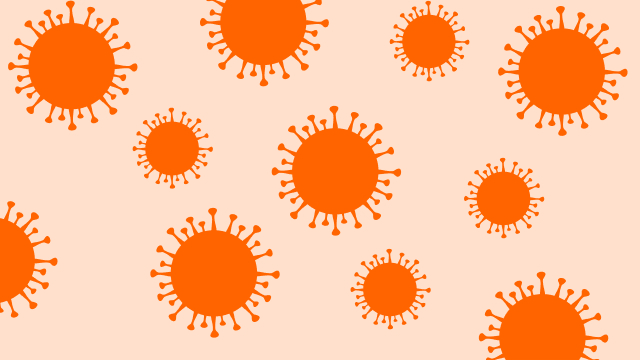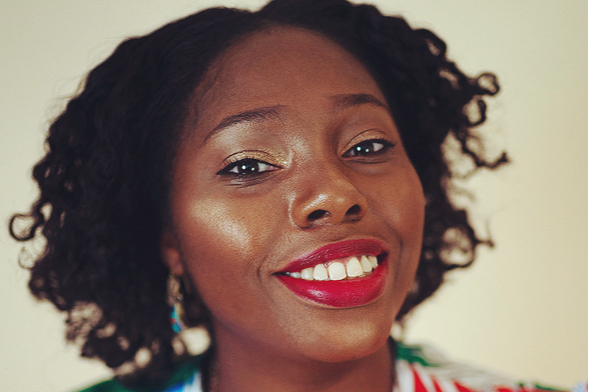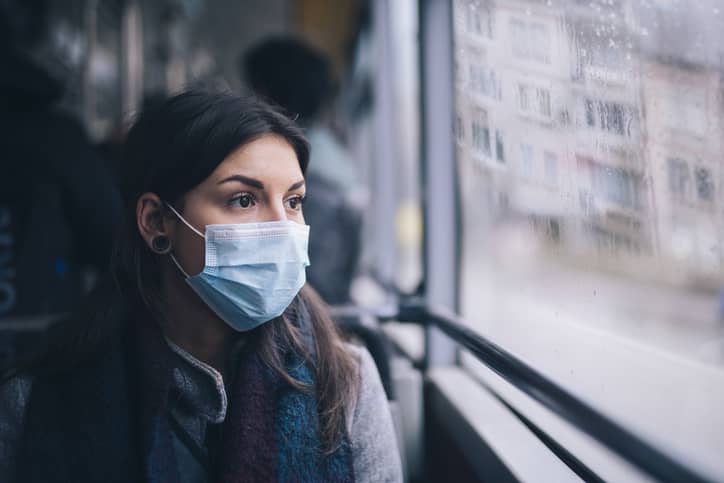Thankfully, most children and young people infected with the coronavirus tend to get mild COVID-19. Many get no symptoms (asymptomatic), and serious illness or death are relatively rare.
But while research suggests children usually recover from COVID-19 within a week, a small number of kids get what’s known as ‘long COVID’ – when symptoms last around 4 weeks or longer.
Whether you have a toddler, primary school kid or teenager with long COVID symptoms, it can be worrying and stressful, and you may be wondering where you can turn. So read on to find out what we know so far about long COVID in kids, and what you can do to support your child and make sure they get the right treatment.
How many children have long COVID?
As yet, we don’t know exactly how many children are affected by long COVID, and reports vary.
In the UK, the latest study from the Office for National Statistics (ONS) estimates that 59,000 children aged 2 to 16 have self-reported long COVID at least 12 weeks after having COVID-19. So although it’s a small proportion of the millions of children who've had COVID-19, if your child has lingering symptoms, they’re not alone.
Long COVID in kids is under-researched, because teens and younger children aren’t always included in COVID-19 studies, and the quality of the studies varies:
- one UK study, which used questionnaire results from more than 6,000 children aged 11 to 17, concluded that nearly 1 in 7 children in this age group who test positive for COVID-19 report long COVID symptoms 15 weeks later
- a larger nationwide Danish study, which included more than 30,000 children, suggests long COVID in children is much less common, with the researchers estimating that fewer than 1 in 100 children aged 6 to 17 who test positive get it
- another UK study suggests long COVID is much less common in children than adults – using data reported by parents and carers via the Zoe COVID app, it found 4.4% of children aged 5 to 17 had COVID-19 symptoms for more than 4 weeks, compared with 13.3% of adults
More information will come in time. For now, however, the key message is that children can get long COVID, but it isn’t very common given the number of children who get COVID-19.
Symptoms of long COVID in children
Although long COVID symptoms are often similar in adults and children, some differences have been reported.
Long COVID symptoms to look out for in children
Research suggests the most common symptoms in children include:
- tiredness (fatigue)
- headaches
- dizziness
- loss of sense of smell or taste
- muscle weakness
- chest pain
Long COVID symptoms that are less common in children
According to the UK’s National Institute for Health and Care Excellence (NICE), children and young people are less likely to have some of the commonly reported new or ongoing COVID-19 symptoms.
Symptoms that may be less common in children and young people than in adults include:
- shortness of breath and heart palpitations
- persistent cough
- pain on breathing
- changes in heart rate
- chest pain

Are some age groups more likely to have long COVID symptoms?
Long COVID seems to be more common in older children than younger children:
- the latest ONS estimates suggest 38,000 children aged 12 to 16 have long COVID symptoms, compared with 21,000 children aged 2 to 11
- the Danish study mentioned above found long COVID was primarily seen in older school children, and that the likelihood of long COVID symptoms increased with age
How long does long COVID last in kids?
Again, this is an area of emerging research, so there are no definite answers. But the Danish study found that most children recovered completely within 1 to 5 months.
However, as with adults, it’s likely that some children will take longer to recover. And the longer-term data just isn’t available yet.
How is long COVID diagnosed in children?
If your child has symptoms that persist for more than 4 weeks after having COVID-19, or you’re worried about any new long COVID symptoms, you should see a doctor for advice.
The doctor will examine them and may want to do tests to check for other possible causes of their symptoms. Depending on your child’s age and symptoms, they may refer them to a paediatrician or another specialist for assessment or treatment.
Read more about how long COVID is diagnosed.
Wondering if something else is causing their symptoms? Read Is it long COVID or something else?
It’s important to remember that COVID-19 is caused by a virus, and children are likely to pick up different viruses when young, as they build up their immune systems. For example, it’s common for them to have around 8 colds a year. With any virus, children can take a while to return to full health, but it’s best to see a doctor if your child hasn’t gone back to normal a few weeks after an infection, or if they’re losing weight, aren't growing, or their behaviour has changed.

When to get urgent medical help
You should get urgent medical attention if your child has any of the following:
- chest pain
- trouble breathing – including drawing in of the muscles below their lower ribs or between their ribs, or at their neck
- coughing up blood
- a temperature (fever) that doesn’t go away or keeps coming back
- joint swelling, or trouble weight-bearing
- they seem confused, sleepy or difficult to wake up
- a new rash that doesn’t disappear when pressed
- constant sickness (vomiting)
- they’re unable to drink fluids
There have also been rare cases of a condition called paediatric inflammatory multisystem syndrome (PIMS) developing in children a few weeks after having COVID-19. It can cause inflammation in various parts of the body, including the lungs, heart, kidneys and brain.
PIMS can be very serious, but in most cases it can be treated. You should contact your doctor right away if your child has a fever for more than 5 days, or a fever and more than 1 of the following symptoms:
- stomach pain
- dizziness or lightheadedness
- red eyes
- loose poos (diarrhoea)
- vomiting
- red or cracked lips
- swollen hands or feet
- skin rash or skin peeling
How is long COVID treated in children?
As with adults, there’s no 1 ‘cure-all’ treatment for long COVID in children. Instead, individual symptoms such as fatigue, can be treated and managed.
Depending on your child’s symptoms, their doctor or paediatrician may refer them to a Long COVID Hub for children and young people. There are 15 paediatric hubs in the UK, which have teams of specialists to help manage and treat common long COVID symptoms.
5 ways to get more support and advice for long COVID in kids
- Your child may need a phased return to school if they have fatigue or other long COVID symptoms (depending on their severity). Speak to their school and check UK government guidance on illness and your child’s education.
- The charity Long COVID Kids has lots of resources to support your child’s recovery, and runs an online forum for parents and carers. You can also watch this YouTube video, which includes interviews with specialists and parents of children with long COVID.
- Try these free downloadable fact sheets from World Physiotherapy with advice and strategies for managing long COVID symptoms, including breathing exercises and pacing activities to help manage fatigue.
- If long COVID and the pandemic have affected your child’s mental health, or they’ve developed anxiety about going back to school, the charity Action for Children has advice on how to support them.
- Take notes and track your child’s symptoms, so you can monitor their progress and take them to see a doctor if you’re not seeing improvements.
Find more information about ways to manage and treat long COVID symptoms in Your Long COVID treatment and recovery plan.
Your health questions answered
My daughter, 14, says her periods have become more irregular since she had COVID-19. It’s been 3 months now and things still aren’t back to normal. Is this part of long COVID or something else?
Answered by: the Healthily Medical team
“Girls can have irregular periods in their teens, until their cycle becomes established. But there have also been reports of COVID-19 temporarily affecting periods. However, this shouldn’t last more than a few cycles, so it’s best to see a doctor if her periods aren’t back to normal after 3 cycles. Period patterns can also change due to things such as stress, changes in weight and health conditions. Read more about whether long COVID affects periods.”







